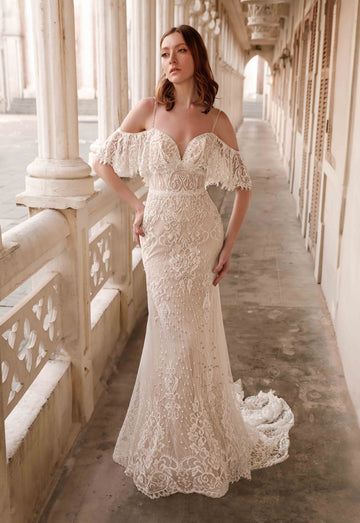Celebrating Feminine Beauty: A Historical Perspective
Celebrating Feminine Beauty: A Historical Perspective
Introduction to Feminine Beauty Through the Ages
Throughout history, the concept of feminine beauty has evolved significantly, reflecting societal norms, cultural influences, and even political climates. From ancient civilizations to modern society, the ideals of beauty have changed, but the celebration of feminine beauty remains a powerful theme in art, literature, and everyday life. This article delves into the historical perspective of feminine beauty, examining how different eras and cultures have shaped the way we celebrate women’s aesthetics.
The Ancient Civilizations: Beauty Ideals of the Past
In ancient civilizations, beauty was often linked with femininity, fertility, and power. For instance, in Ancient Egypt, beauty was embodied by goddesses like Hathor, who represented love, beauty, and joy. Egyptian women adorned themselves with cosmetics made from natural materials, showcasing their status and health. Similarly, Greek and Roman societies celebrated beauty through art and sculpture, immortalizing the female form in ways that continue to inspire artists today.

Table: Beauty Ideals in Ancient Civilizations
| Culture | Beauty Ideals | Cosmetic Practices |
| Ancient Egypt | Goddess-like features, smooth skin | Use of kohl, oils, and natural pigments |
| Ancient Greece | Proportional figures, lack of imperfections | Use of olive oil, honey, and natural exfoliants |
| Ancient Rome | Blonde hair, pale skin as a sign of wealth | Whitening powders, use of natural dyes |
The Middle Ages: A Time of Transformation
As we move into the Middle Ages, societal views of femininity shifted dramatically. The church heavily influenced beauty standards, often equating modesty with moral virtue. In this period, plumpness was seen as a sign of wealth and prosperity, while pale skin was prized as a characteristic of nobility. Women of high status would engage in practices aimed at preserving their pale complexion, including the use of lead-based powders—something that, while dangerous, demonstrates the extreme lengths women went to meet societal beauty ideals.
The Renaissance: The Rebirth of Beauty
The Renaissance ushered in a renewed interest in the human form, with artists like Botticelli and Michelangelo depicting women with curves and natural beauty. This era celebrated not only physical attributes but also intelligence, creativity, and personal expression. Artistic representations started to include more diverse body types, creating a broader spectrum of beauty that resonates today.
The 18th and 19th Centuries: Industrialization and Beauty
With the advent of industrialization, beauty standards began to shift yet again. Victorian ideals emphasized the hourglass figure, leading to the popularity of corsets and other constrictive clothing. This period saw the rise of cosmetic products marketed to women, promoting an idea of beauty that combined both natural and enhanced features. Throughout these centuries, literature and fashion magazines began to play a crucial role in shaping public perceptions of beauty.
The 20th Century: The Era of Diversity
The 20th century witnessed a drastic transformation in the celebration of feminine beauty. The introduction of new media forms, such as film and photography, allowed for diverse representations of women. Icons like Marilyn Monroe in the 1950s and more diverse figures such as Eartha Kitt and Josephine Baker challenged existing norms and paved the way for body positivity movements. The feminist movement of the late 20th century began to advocate for broader definitions of beauty, including all shapes, sizes, and ethnicities.
The 21st Century: Redefining Beauty
In the contemporary landscape, the celebration of feminine beauty continues to evolve. Social media platforms like Instagram and TikTok have given rise to a new generation of beauty influencers who challenge traditional norms. The increasing visibility of plus-size, transgender, and non-binary models challenges ingrained notions of femininity and beauty. Campaigns promoting body positivity and self-love are reshaping how society perceives beauty, moving away from narrow ideals toward a more inclusive celebration of self-expression.
Challenges in Modern Beauty Standards
Despite the progress made, modern beauty standards are not without their challenges. The proliferation of edited images and unrealistic portrayals of beauty can lead to harmful comparisons and diminished self-esteem among women. Addressing mental health issues related to body image is crucial, as societal pressures continue to impact how women view themselves.
Conclusion: A Continuous Celebration of Feminine Beauty
Celebrating feminine beauty is not merely a matter of personal aesthetic; it is a reflection of cultural evolution, empowerment, and self-acceptance. As we study history, it becomes evident that beauty standards are deeply intertwined with societal values and that our perceptions change over time. Looking forward, it is essential to promote diverse representations of beauty, focusing on character and individuality rather than rigid stereotypes.
In summary, understanding the historical perspective of feminine beauty allows us to appreciate the journey of women through the ages. It encourages us to acknowledge the achievements of those who fought against societal norms and celebrates the present, where every woman can embrace her unique beauty in all its forms. It is our responsibility to promote a culture that uplifts, empowers, and celebrates femininity in all its glorious diversity.
Final Thoughts: As we continue to explore the realms of beauty and femininity, it is crucial to nurture an environment where women feel empowered to express their individuality. Engaging in open conversations about beauty standards and challenging harmful norms can pave the way for a more inclusive society where every woman can celebrate her beauty, past, present, and future.
